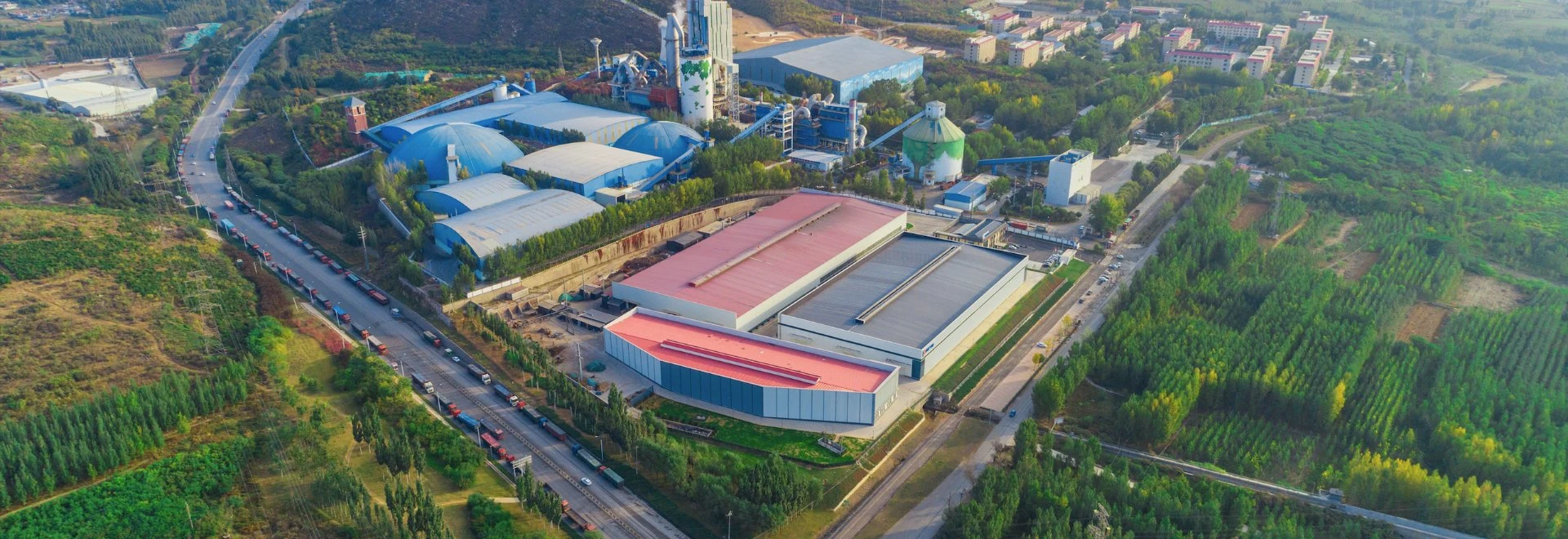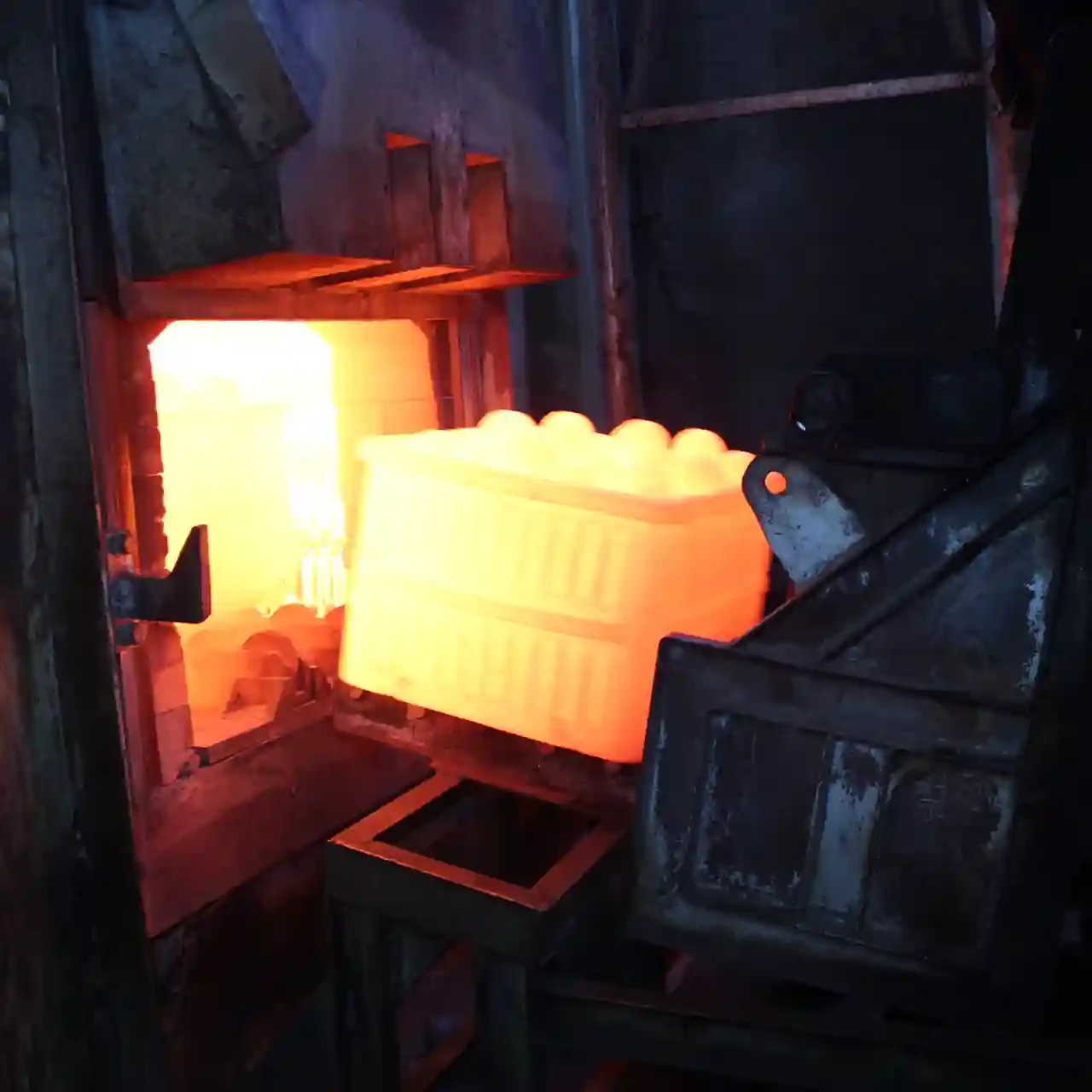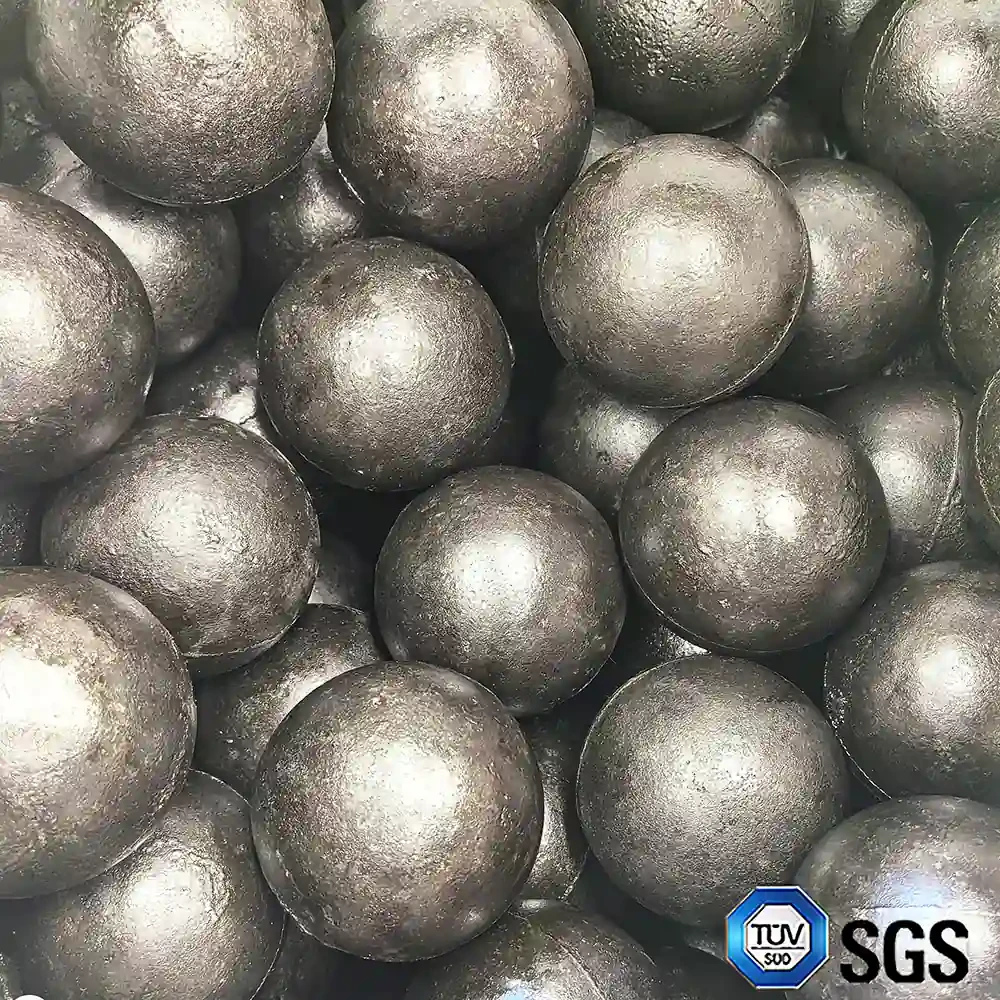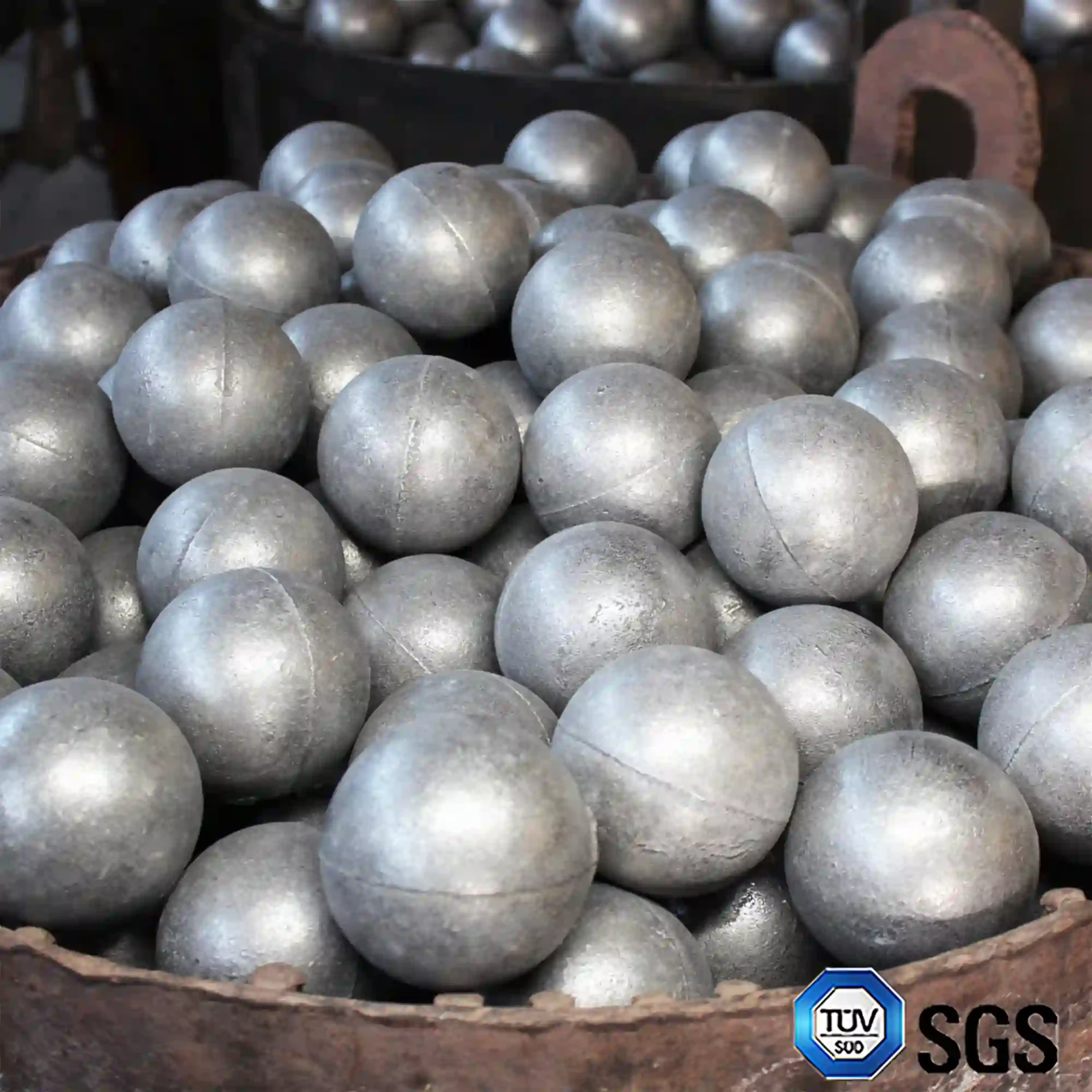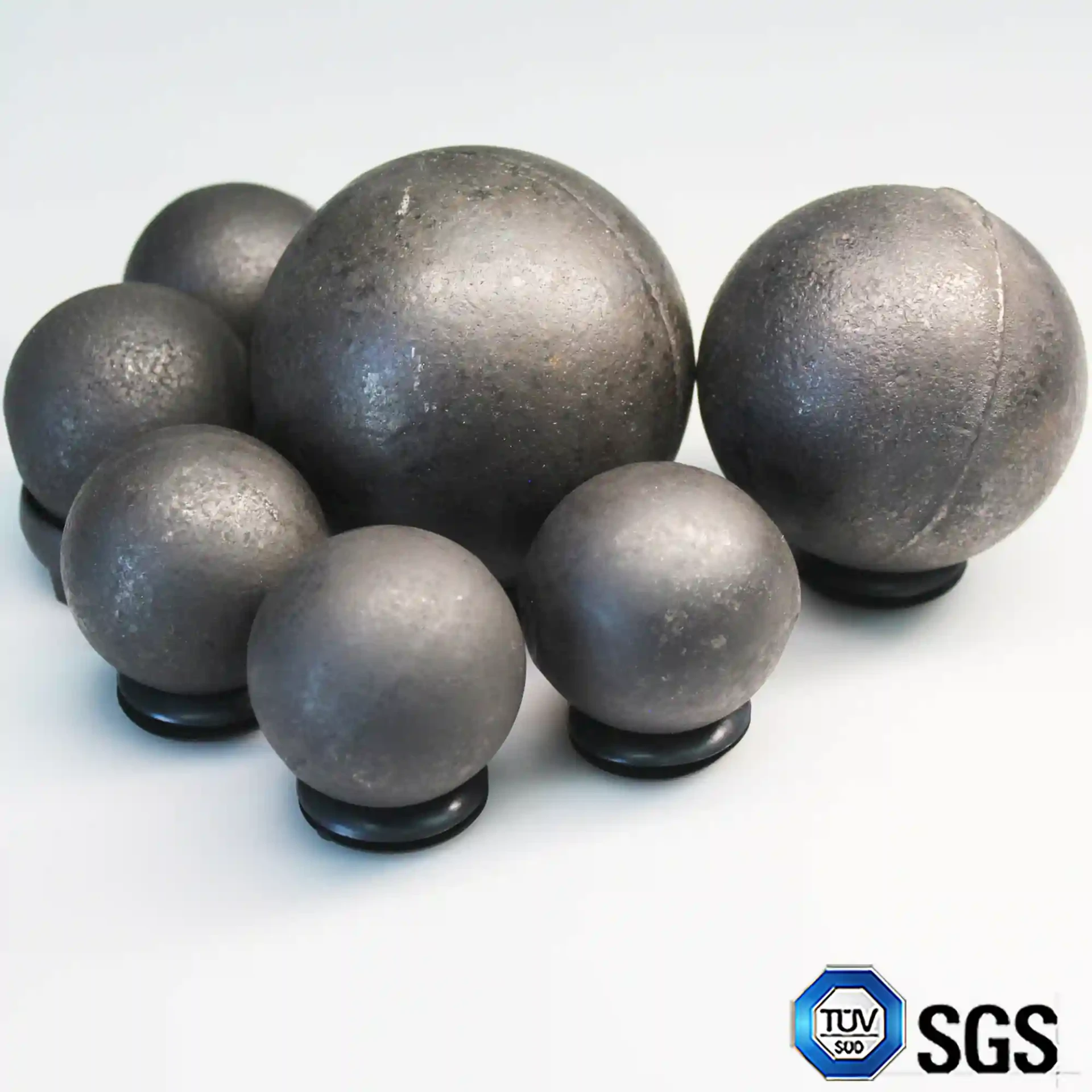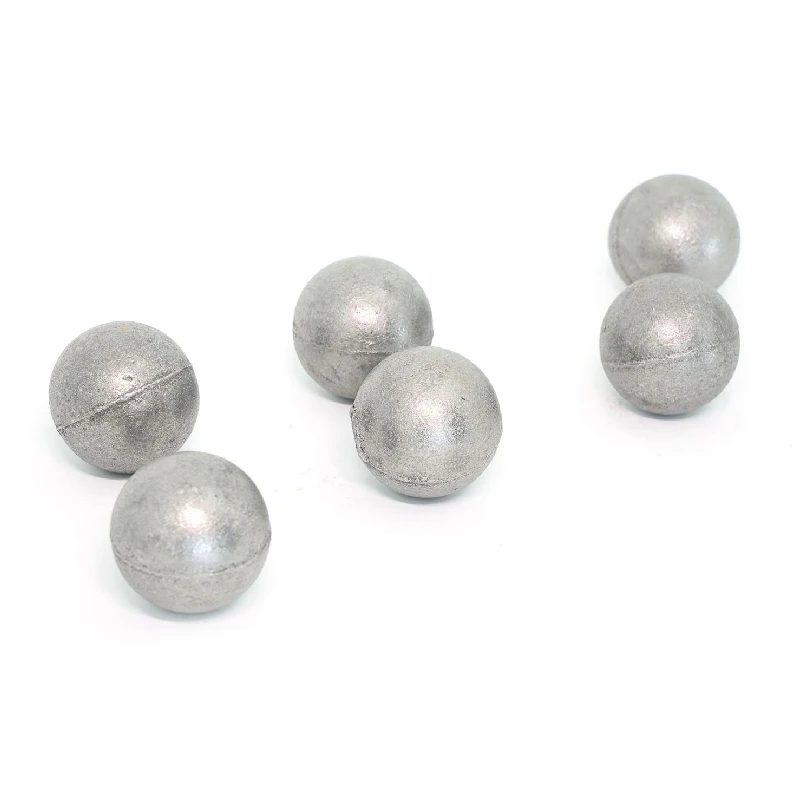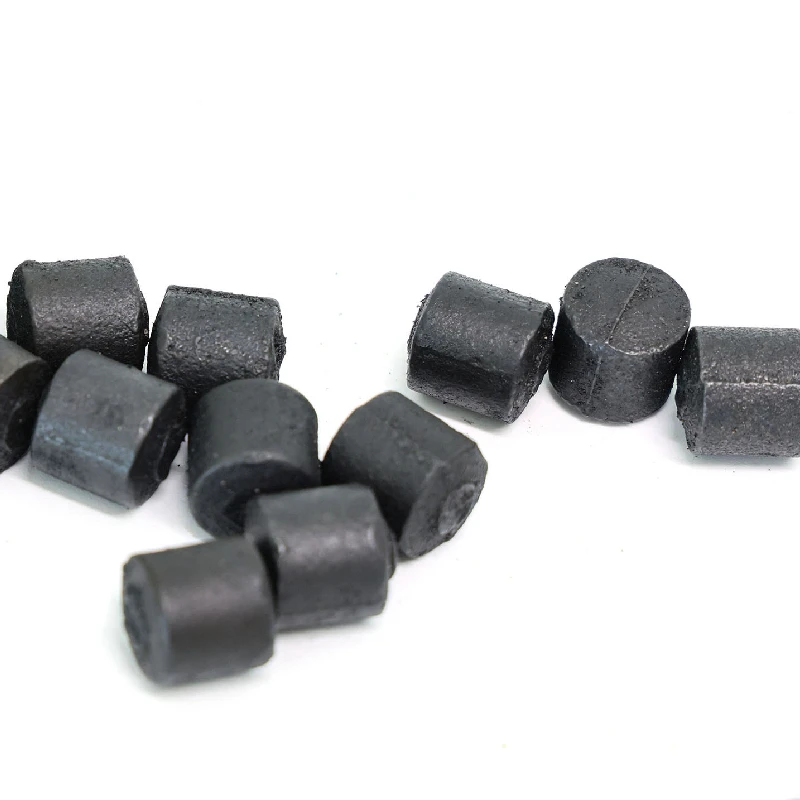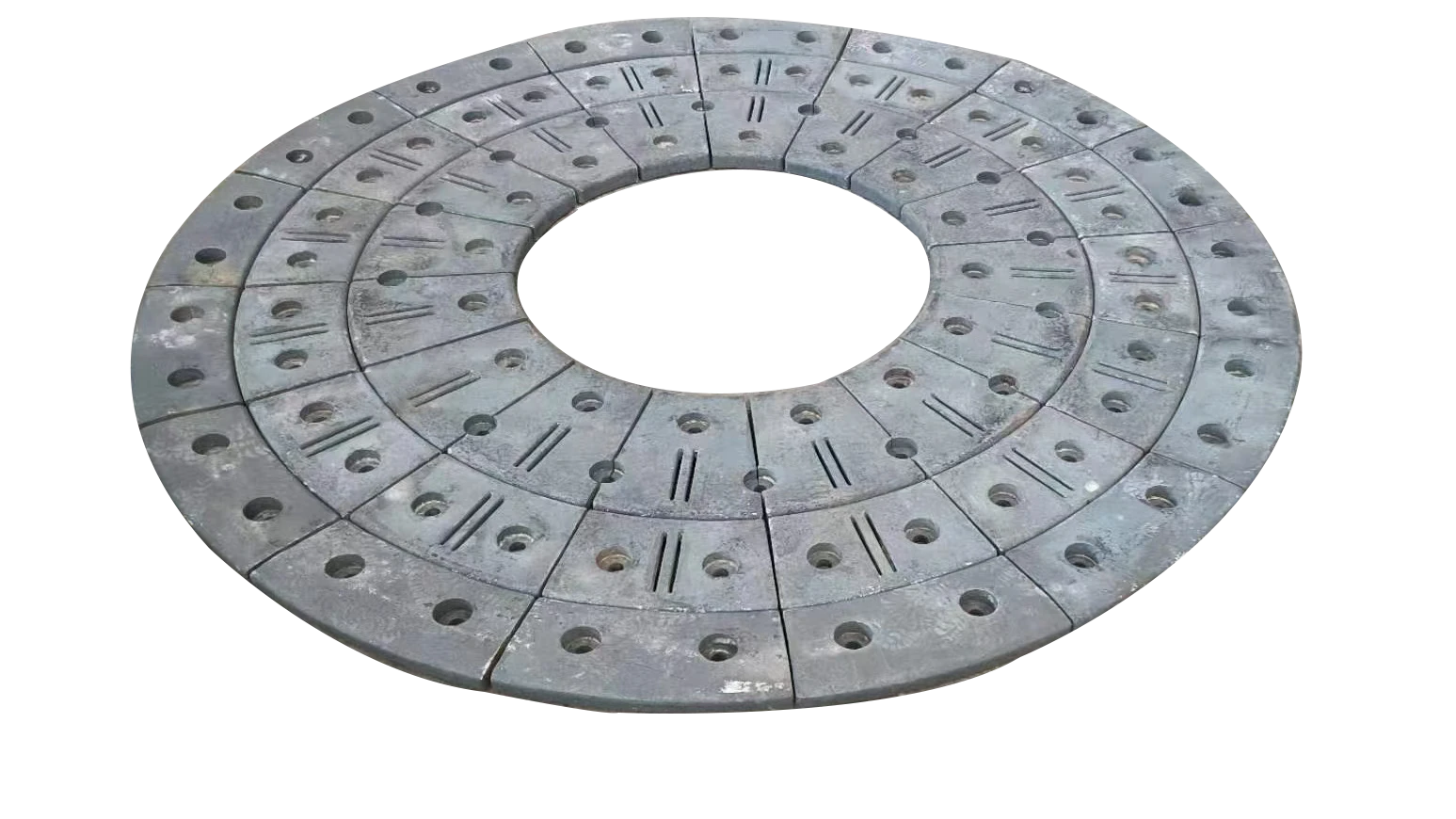Aug . 07, 2025 04:40 Back to list
High-Performance Steel Milling Balls for Grinding & Mining
In the relentless pursuit of efficiency and material optimization across heavy industries, the role of grinding media is paramount. Among these, milling balls stand as the unsung heroes, diligently breaking down raw materials into finer particles crucial for subsequent processing. This comprehensive guide delves into the world of **milling balls**, with a particular focus on the innovative Super High Chromium Grinding Ball. We will explore industry trends, technical intricacies, diverse application scenarios, and the cutting-edge manufacturing processes that ensure their superior performance.
From large-scale mining balls used in ore dressing to specialized media for sand milling, the demand for robust, long-lasting, and energy-efficient grinding solutions is constantly evolving. As leading ball mill manufacturers, we understand the critical importance of selecting the right **milling balls** to maximize throughput and minimize operational costs. Our Super High Chromium Grinding Ball is engineered precisely for these challenges, representing the pinnacle of steel grinding balls technology.
Industry Trends and the Growing Demand for Advanced **Milling Balls**
The global industrial landscape, characterized by rapid urbanization and infrastructure development, continues to drive an insatiable demand for raw materials. Industries such as mining, cement production, thermal power generation, and specialized chemical processing rely heavily on efficient comminution – the process of reducing particle size – which is predominantly achieved using ball mills equipped with high-quality milling balls.
Current industry trends indicate a significant shift towards grinding media that offer superior wear resistance, higher impact toughness, and enhanced energy efficiency. This is primarily driven by:
- Sustainability Initiatives: Reducing energy consumption and waste generation is a top priority. Efficient steel balls for ball mill operations translate directly into lower carbon footprints and less material replacement.
- Operational Cost Reduction: The cost of grinding media, coupled with the energy required for comminution, constitutes a significant portion of operational expenditure. Longer service life of milling balls directly reduces replacement costs and downtime.
- Processing Difficult Ores: As easily accessible ore deposits deplete, industries are increasingly processing harder, more abrasive materials. This necessitates **milling balls** with exceptional hardness and wear resistance, such as those made from high chromium alloys.
- Digitalization and IoT: Integration of smart monitoring systems in ball mills requires consistent performance from grinding balls to optimize real-time adjustments and predictive maintenance.
According to a report by Grand View Research, the global grinding media market size was valued at USD 1.8 billion in 2022 and is expected to grow at a compound annual growth rate (CAGR) of 4.5% from 2023 to 2030. This growth is largely attributable to the increasing demand for minerals and metals, as well as the expansion of cement and power industries. High-chromium milling balls are projected to dominate this market segment due to their superior performance characteristics.
Product Spotlight: Super High Chromium Grinding Ball
Our Super High Chromium Grinding Ball (Product URL: https://www.cdchengda.com/super-high-chromium-grinding-ball.html) represents a breakthrough in grinding media technology. Designed for unparalleled performance in the most demanding grinding applications, these steel grinding balls are specifically engineered to deliver maximum efficiency and longevity.
Key Technical Parameters & Specifications
The performance of milling balls is defined by a range of critical parameters:
- Material Composition: Primarily high chromium alloy steel (Cr content typically 10-30%). This specific composition provides exceptional hardness and wear resistance. "Chromium" (Cr) is a hard, corrosion-resistant transition metal that, when alloyed with steel, forms hard carbides, significantly enhancing the wear properties of the material.
- Hardness: Our Super High Chromium Grinding Balls typically exhibit a hardness of HRC 60-68. This high hardness ensures excellent resistance to abrasive wear, which is the primary mode of failure for milling balls in most applications.
- Impact Toughness: Despite their high hardness, these grinding balls maintain superior impact toughness, typically > 3 J/cm². This property is crucial to prevent breakage and spalling under the high impact forces experienced within ball mills, particularly when grinding hard materials.
- Density: High density (around 7.8 g/cm³) ensures efficient energy transfer during grinding, contributing to better comminution rates.
- Wear Rate: Significantly lower wear rates compared to conventional grinding media, leading to reduced consumption and lower operational costs.
- Corrosion Resistance: The high chromium content also imparts excellent corrosion resistance, making them suitable for wet grinding processes and corrosive slurries, common in chemical and mineral processing.
- Size Range: Available in a wide range of diameters, typically from 20mm to 150mm, to suit various mill sizes and grinding requirements.
Typical Parameter Comparison: **Milling Balls**
To illustrate the advantages, consider the following typical parameters for various types of milling balls:
| Parameter | Super High Chromium Grinding Ball | Forged Steel Grinding Ball | Low Chromium Cast Iron Ball |
|---|---|---|---|
| Material | High Cr Alloy Steel (Cr: 10-30%) | High Carbon Alloy Steel | Low Cr Cast Iron (Cr: 0.5-2.5%) |
| Hardness (HRC) | 60-68 | 55-62 | 45-55 |
| Impact Toughness (J/cm²) | > 3.0 | > 2.0 | |
| Wear Rate (g/kWh) | 0.05-0.10 | 0.15-0.25 | 0.30-0.50 |
| Density (g/cm³) | ~7.8 | ~7.85 | ~7.6 |
| Cost Effectiveness (Relative) | High (due to long life) | Medium | Low (due to high consumption) |
This comparison clearly demonstrates the superior properties of Super High Chromium Grinding Balls, particularly in terms of hardness and wear rate, which are directly correlated with operational longevity and cost efficiency in grinding applications.
The Meticulous Manufacturing Process of Super High Chromium Grinding Balls
The production of high-quality milling balls like our Super High Chromium Grinding Ball is a sophisticated process that combines metallurgical expertise with advanced manufacturing techniques. Unlike conventional methods, our process emphasizes precision and consistency to achieve superior material properties. While exact details are proprietary, the general workflow involves a series of meticulously controlled steps:
1. Material Preparation & Melting
High-grade raw materials, including specific proportions of iron, chromium, carbon, and other alloying elements, are carefully selected. These are then melted in induction or electric arc furnaces under strict atmospheric control to ensure precise chemical composition.
2. Precision Casting
The molten alloy is poured into highly durable molds, often made from sand or ceramic, designed to produce **milling balls** of various diameters. This casting process requires precise temperature control and cooling rates to prevent defects and ensure uniform grain structure. This is a critical stage for achieving the desired microstructure.
3. Specialized Heat Treatment
This is arguably the most critical stage. After casting, the grinding balls undergo a multi-stage heat treatment process. This typically involves quenching (rapid cooling from high temperatures to achieve martensitic structure for hardness) followed by tempering (reheating to specific temperatures to enhance toughness and relieve internal stresses while maintaining hardness). Our proprietary heat treatment protocols are optimized to form extremely hard and wear-resistant chromium carbides uniformly throughout the matrix, without compromising impact resistance.
4. Quality Control & Inspection
Every batch of milling balls undergoes rigorous quality control. This includes:
- Hardness Testing: Using Brinell or Rockwell hardness testers (e.g., in accordance with ASTM E18).
- Impact Testing: Charpy or Izod impact tests to verify toughness (e.g., ASTM E23).
- Microstructure Analysis: Metallographic examination to ensure uniform carbide distribution and defect-free structure.
- Chemical Composition Analysis: Spectroscopic analysis to confirm adherence to alloy specifications.
- Dimensional Inspection: Ensuring precise spherical shape and size tolerance.
Our products adhere to international standards such as ISO 9001 for Quality Management Systems and ANSI standards for material properties where applicable, ensuring consistent, reliable performance.
5. Finishing & Packaging
After inspection, the milling balls are cleaned, coated with anti-corrosion agents if necessary, and then meticulously packed for shipment, often in durable steel drums or bulk bags, to prevent damage during transit.
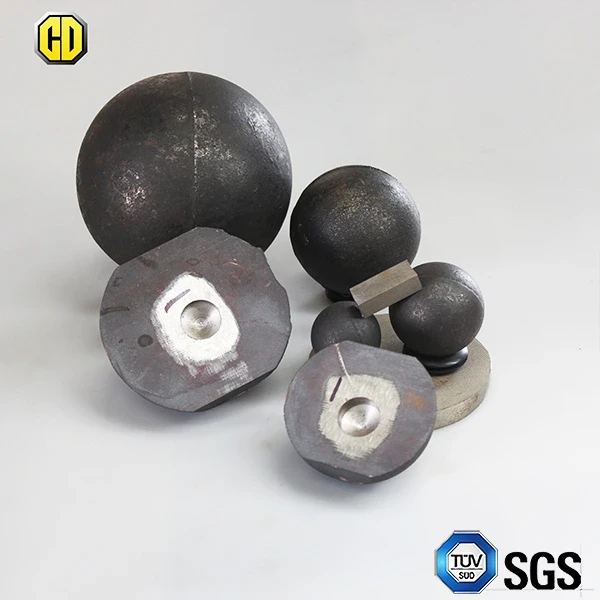
"The advanced manufacturing techniques for high-chromium milling balls represent a critical technological advancement. Their unique microstructure, characterized by complex carbides embedded in a tough matrix, offers an unparalleled balance of wear resistance and impact strength, essential for efficient comminution in modern industrial applications." - Dr. Chen Li, Material Science Expert.
Application Scenarios and Technical Advantages
The versatility and superior performance of Super High Chromium Grinding Balls make them indispensable across a wide array of heavy industries. Their technical advantages translate directly into significant operational benefits for our clients.
Key Application Scenarios:
- Mining and Mineral Processing: As mining balls, they are critical for grinding various ores including gold, copper, iron, molybdenum, and lead-zinc ores. Their resistance to abrasive wear in harsh, often corrosive, slurry environments ensures high throughput and reduced media consumption, vital for sustainable mining operations.
- Cement Production: In the cement industry, these milling balls are used for grinding clinker, limestone, gypsum, and other raw materials. The high hardness helps achieve fine particle size distribution efficiently, directly impacting cement quality and energy consumption.
- Thermal Power Plants: For coal pulverization in power generation, high chromium steel grinding balls are preferred due to coal's abrasive nature. They ensure uniform grinding, leading to better combustion efficiency and reduced emissions.
- Chemical and Petrochemical Industries: In certain chemical processes involving grinding of catalysts, pigments, or other raw materials, the superior corrosion resistance of these milling balls is invaluable, preventing contamination and extending equipment life.
- Sand Milling / Ultrafine Grinding: For applications requiring extremely fine particle sizes, such as in ceramics, paints, and pigments, precision-engineered sand milling media is crucial. Our high chromium balls offer the required hardness and wear resistance for such demanding processes.
- Water Supply and Drainage (Related Equipment): While not directly used as **milling balls** in this sector, the principles of material strength and corrosion resistance (derived from high chromium alloys) are also applied in high-wear components of pumps, valves, and other critical infrastructure within water treatment facilities. Our expertise in alloy development extends to these areas, ensuring durability in corrosive fluid handling.
Technical Advantages:
The adoption of Super High Chromium Grinding Balls yields multiple operational benefits:
- Exceptional Wear Resistance: The primary advantage. Our steel grinding balls exhibit 2-3 times higher wear resistance compared to traditional media like low chromium cast iron or forged balls. This significantly reduces media consumption and replenishment frequency.
- Reduced Energy Consumption (Energy Saving): More efficient grinding translates to less energy required per ton of material processed. Due to their consistent shape retention and optimal density, these milling balls transfer impact energy more effectively, leading to lower power consumption for the ball mill.
- Extended Service Life & Reduced Downtime: The longevity of our milling balls means fewer change-outs, directly contributing to increased operational uptime and reduced labor costs associated with media replenishment.
- Maintained Mill Efficiency: As grinding media wears, its shape and size change, impacting grinding efficiency. High chromium balls maintain their spherical shape for longer, ensuring consistent grinding performance throughout their lifespan.
- Superior Anti-corrosion Properties: Crucial for wet grinding environments or processes involving acidic/alkaline slurries. The high chromium content forms a passive layer that resists chemical degradation, extending the life of the steel balls for ball mill.
- Cost-Effectiveness (Life Cycle Cost): While the initial investment might be higher than conventional media, the drastically reduced wear rate, lower energy consumption, and decreased downtime result in a significantly lower overall life cycle cost, providing a higher return on investment (ROI).
Manufacturer Comparison: Why Choose Our Super High Chromium Grinding Ball?
The market for milling balls is diverse, with numerous ball mill manufacturers and grinding media suppliers. However, not all products are created equal. Our commitment to quality, innovation, and customer satisfaction sets us apart.
Our Differentiating Factors:
- Unrivaled Metallurgical Expertise: With years of dedicated research and development in alloy metallurgy, particularly in high-chromium cast iron and steel, we possess a deep understanding of material science. This expertise translates into grinding balls with optimized microstructure and superior mechanical properties.
- Proprietary Manufacturing Processes: Our specialized casting and heat treatment processes are developed in-house, ensuring precise control over the formation of carbides and the overall hardness-toughness balance, leading to the "Super" in Super High Chromium Grinding Ball.
- Strict Quality Assurance: Every batch undergoes stringent quality checks, far beyond industry minimums. We adhere to and often exceed international standards like ISO 9001 and implement robust internal protocols, guaranteeing consistent product quality. Our commitment to quality is validated by various third-party certifications and a long history of successful client partnerships globally.
- Proven Track Record & Client Satisfaction: We have been serving the industry for over two decades, providing reliable milling balls solutions to leading mining, cement, and power companies worldwide. Our client testimonials consistently highlight reduced operational costs and increased grinding efficiency.
- Customization and Technical Support: Unlike suppliers offering generic products, we provide tailored solutions. Our technical team works closely with clients to understand their specific mill parameters, material characteristics, and operational goals, recommending the optimal steel balls for ball mill to maximize performance.
Testimonial Excerpt:
"Switching to their Super High Chromium Grinding Balls for our clinker grinding mill was a game-changer. We observed a remarkable 25% reduction in grinding media consumption and a noticeable decrease in energy usage. The extended lifespan means less downtime for media replenishment, directly boosting our production capacity. Their technical support during the transition was also exceptional." - Operations Manager, Major Cement Producer in Southeast Asia.
Customized Solutions and Consultation Services
Understanding that every grinding application is unique, we don't just supply milling balls; we provide comprehensive grinding solutions. Our approach begins with a detailed assessment of your operational needs:
- Material Analysis: Understanding the abrasiveness, hardness, and specific gravity of the material to be ground.
- Mill Specifications: Detailed analysis of ball mill type (wet/dry, continuous/batch), size, speed, liner type, and feed/discharge characteristics.
- Desired Output: Target particle size distribution, throughput requirements, and energy consumption goals.
- Operational Environment: Temperature, humidity, presence of corrosive agents.
Based on this data, our engineers recommend the optimal size distribution and quantity of Super High Chromium Grinding Balls. We can also provide guidance on charging ratios and operational adjustments to maximize grinding efficiency and minimize wear rate. Our long-term relationships with clients are built on trust and a proven ability to deliver quantifiable improvements in their grinding circuits.
Application Cases and Proven Performance
Our Super High Chromium Grinding Balls have been successfully implemented in numerous challenging industrial applications, delivering consistent and measurable results. Here are a few generalized examples illustrating their impact:
- Case Study 1: Large-Scale Copper Mine (Chile)
Challenge: High consumption of traditional forged mining balls due to highly abrasive copper ore, leading to frequent media top-ups and significant operational costs.
Solution: Replaced existing grinding media with Super High Chromium Grinding Balls (100mm-120mm diameter). Our technical team assisted in optimizing the ball charge and mill parameters.
Result: Over 18 months, the mine reported a 30% reduction in specific grinding media consumption (kg/ton of ore) and an estimated 15% increase in mill throughput due to more consistent grinding efficiency. This led to annual savings exceeding $1.5 million in grinding media costs alone.
- Case Study 2: Cement Plant (India)
Challenge: Inconsistent clinker fineness and high energy consumption in their finish grinding mill, using low chromium cast iron milling balls.
Solution: Introduced a mixed charge of our Super High Chromium Grinding Balls (50mm-80mm) in the fine grinding chamber, leveraging their high hardness for optimal comminution.
Result: The plant achieved an average 10% reduction in power consumption per ton of clinker and more consistent product fineness, contributing to enhanced cement quality and reduced operational overhead. Grinding media lifespan increased by over 200%.
- Case Study 3: Sand Production Facility (Australia)
Challenge: Rapid wear of sand milling media when processing quartz sand for specialized applications, leading to frequent replacements and production bottlenecks.
Solution: Provided smaller diameter Super High Chromium Grinding Balls (20mm-40mm) designed for high-abrasion **sand milling** applications.
Result: The client reported a four-fold increase in grinding media lifespan, significantly reducing replacement frequency and maintenance costs. The consistent particle size distribution also improved the quality of the final sand product.
These cases exemplify our commitment to delivering tangible value. Our reputation as a trusted partner and leading ball mill manufacturers stems from these consistent results and the long-term relationships we build with our clients.
Professional FAQ: Your Questions About **Milling Balls** Answered
Q1: What is the primary difference between Super High Chromium Grinding Balls and forged steel balls?
A1: The main difference lies in their material composition and manufacturing process, which dictate their properties. Super High Chromium Grinding Balls are cast from an alloy rich in chromium (typically 10-30%), forming very hard carbides during a specialized heat treatment process. This gives them exceptional hardness (HRC 60-68) and superior wear resistance, making them ideal for abrasive environments. Forged steel balls, while tough and impact-resistant, are typically made from high carbon alloy steel and achieve their properties through forging and different heat treatment, resulting in lower hardness (HRC 55-62) and higher wear rates compared to high chromium counterparts. In short, high chromium balls excel in abrasive wear, while forged balls are often chosen for higher impact applications where severe breakage is a concern.
Q2: How does the hardness of milling balls affect their performance?
A2: Hardness is a critical factor directly correlated with wear resistance. Higher hardness in steel grinding balls means they can resist deformation and material loss when subjected to abrasive forces within the mill. Our Super High Chromium Grinding Balls, with HRC 60-68, are significantly harder than conventional media, leading to a much longer service life and reduced specific consumption (kg media per ton of material processed). However, extremely high hardness without sufficient toughness can lead to brittleness, which is why balancing these two properties is key.
Q3: What are the common inspection standards for grinding balls?
A3: Common inspection standards include ISO (International Organization for Standardization) for quality management systems (e.g., ISO 9001), and various material testing standards from organizations like ASTM (American Society for Testing and Materials) and ANSI (American National Standards Institute). These standards cover chemical composition, hardness (e.g., ASTM E18 for Rockwell hardness), impact toughness (e.g., ASTM E23 for Charpy impact), and dimensional tolerances. Reputable ball mill manufacturers adhere strictly to these, often having internal standards that exceed minimum requirements.
Q4: Can Super High Chromium Grinding Balls be used in both wet and dry grinding applications?
A4: Yes, absolutely. The high chromium content in these milling balls provides excellent corrosion resistance, making them highly suitable for wet grinding processes where water or corrosive slurries are present. Their superior wear resistance is equally beneficial in dry grinding environments, such as cement or coal pulverization, where abrasive wear is the predominant mechanism. This versatility reduces the need for different media types for different mill conditions.
Q5: What is the typical service life of Super High Chromium Grinding Balls compared to other types?
A5: The service life of Super High Chromium Grinding Balls is significantly longer, often 2-4 times that of low chromium cast iron balls and 1.5-2 times that of forged steel balls, depending on the application and material being ground. This extended lifespan translates directly into reduced media consumption, less frequent mill shutdowns for media replenishment, and substantial overall cost savings for operational expenditure.
Q6: How does the specific gravity (density) of grinding balls impact grinding efficiency?
A6: The specific gravity (or density) of milling balls directly influences the energy transferred to the material during impact and attrition. Higher density steel balls for ball mill (around 7.8 g/cm³ for steel/high chrome alloys) means that for the same volume, there is more mass, leading to higher impact energy. This is crucial for efficiently breaking down hard and coarse materials. Lower density media might require higher mill speeds or longer grinding times to achieve the same fineness, consuming more energy in the process.
Q7: What is the recommended delivery cycle and warranty for your Super High Chromium Grinding Balls?
A7: Our typical delivery cycle varies based on order volume and destination, but we maintain efficient production and logistics to ensure timely dispatch, usually within 4-6 weeks for standard orders. For large or customized orders, specific timelines are provided. We offer a comprehensive warranty against manufacturing defects and material failures under normal operating conditions. Our customer support team is always available to discuss specific project timelines, logistics, and warranty details to ensure complete client satisfaction and trust.
Conclusion: Investing in Superior **Milling Balls** for Future Efficiency
The choice of milling balls is a critical operational decision that profoundly impacts the efficiency, cost-effectiveness, and environmental footprint of any comminution process. As industries evolve and demand for both output and sustainability increases, traditional grinding media often fall short.
Our Super High Chromium Grinding Ball offers a compelling solution, representing the apex of steel grinding balls technology. With their unmatched hardness, exceptional wear resistance, superior impact toughness, and robust anti-corrosion properties, they provide tangible benefits across diverse applications, from intensive mining balls operations to precise sand milling. By significantly reducing media consumption, decreasing energy expenditure, and extending operational uptime, these milling balls deliver a superior return on investment.
As a seasoned ball mill manufacturers and grinding media expert, we are committed to partnering with our clients to optimize their grinding circuits. Our expertise, coupled with our state-of-the-art manufacturing capabilities and rigorous quality control, ensures that you receive not just a product, but a complete solution designed for long-term success.
Explore the full specifications and benefits of our Super High Chromium Grinding Ball and discover how we can elevate your grinding operations. Visit our product page: Learn More About Super High Chromium Grinding Ball
References and Further Reading
For more in-depth understanding of grinding media and comminution processes, we recommend exploring the following academic and industry resources:
- Journal of Minerals Engineering: Often features research papers on grinding media performance, mill optimization, and material science advancements. For example, a study on "Wear Mechanisms of Grinding Media in Ball Mills" by S. E. Llewellyn and R. C. Dunne (specific article link varies by issue).
- International Journal of Mineral Processing: Provides insights into process metallurgy, including detailed analysis of grinding efficiency and media selection. See articles discussing "The effect of grinding media characteristics on comminution efficiency and energy consumption."
- SME (Society for Mining, Metallurgy & Exploration) Handbooks: Comprehensive guides on various aspects of mining and mineral processing, including chapters dedicated to comminution and grinding media.
- Industry Forums & Conferences: Proceedings from events like MetPlant, Comminution, and Procemin often contain the latest innovations and case studies. For example, presentations at the "Comminution" series of conferences frequently highlight advancements in **milling balls** technology and applications.
While specific direct links to articles vary over time and require subscription access, searching for terms like "high chromium grinding media wear mechanisms" or "energy efficiency in ball mills" on academic search engines like Google Scholar or specific publisher sites (Elsevier, Springer, Wiley) will yield relevant, peer-reviewed content.
-
Expert Insights on Fabrica de Molinos de Bolas: Industry Trends & Global Applications
NewsNov.24,2025
-
Expert Insights on Fabricantes de Bolas de Molienda de Acero: Global Applications & Trends
NewsNov.23,2025
-
Leading Fabricantes de Bolas de Molienda: Your Ultimate Guide to Grinding Balls
NewsNov.23,2025
-
Fabricante de Bolas de Molienda – Quality Grinding Balls for Efficient Industry
NewsNov.23,2025
-
Trusted Proveedores de Medios de Molienda for Efficient Industrial Grinding
NewsNov.22,2025
-
Proveedores de Bolas de Molienda: Your Guide to Top Grinding Ball Suppliers & Industry Insights
NewsNov.22,2025
Realted Products

